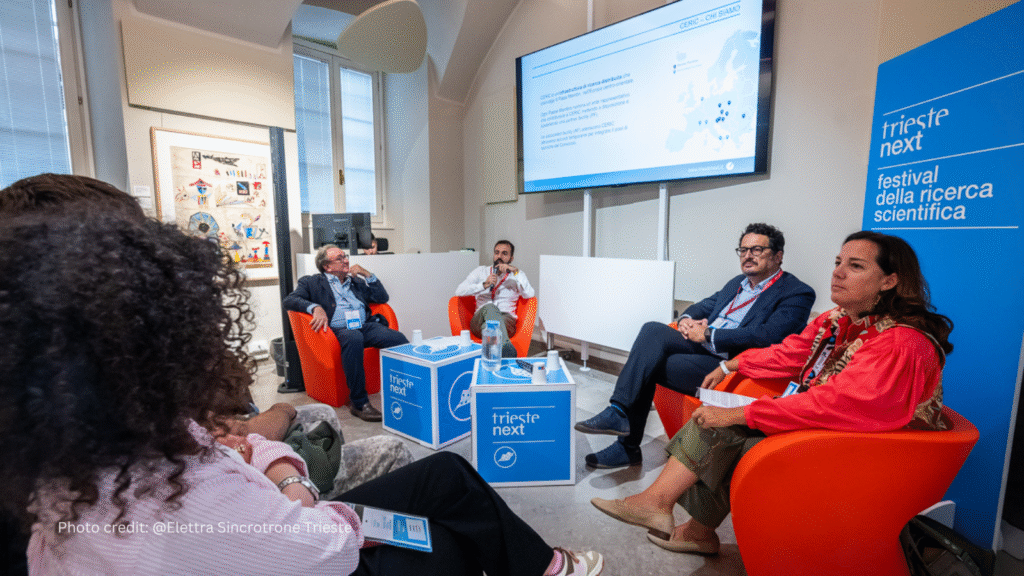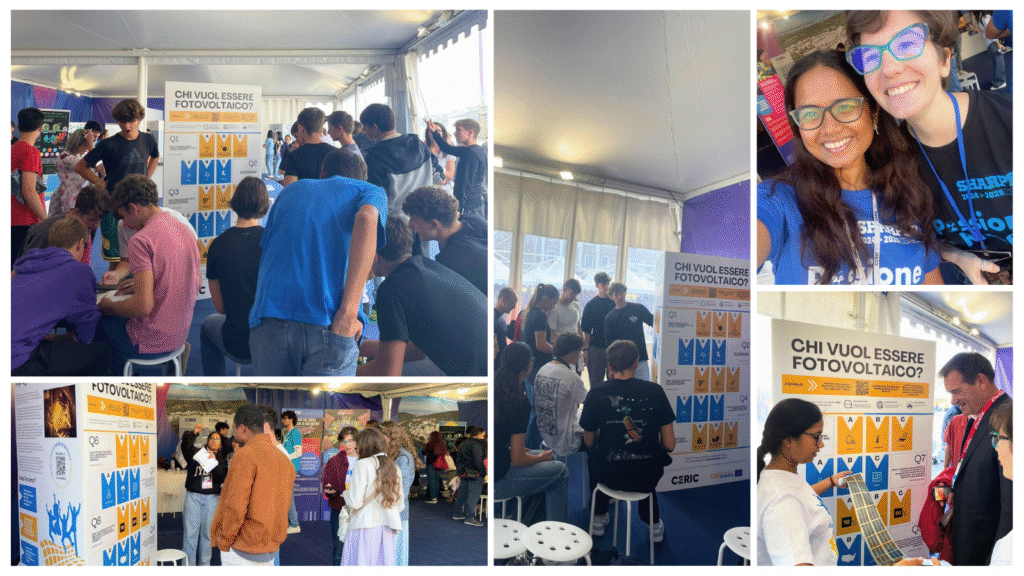CERIC at the 14th Edition of Trieste Next
|From 26 to 28 September, CERIC took part in Trieste Next 2025, the annual Festival of Scientific Research that animated the heart of Trieste. In collaboration with Elettra Sincrotrone Trieste, the Consortium organised two conferences and a three-day activity in the city’s main square.
Facing art crime with science
In the “Art Forgeries and Crime: Scientific Responses” panel (Saturday afternoon), the discussion highlighted how collaboration between law enforcement and large research infrastructures, with their advanced analytical techniques, has enabled a multidisciplinary approach to identify and monitor complex transnational criminal networks. The session featured Gianluca Quarta from the University of Salento, Vittoria Luda di Cortemiglia, a consultant specialised in organised crime prevention, and Franco Zanini from Elettra Sincrotrone Trieste, offering perspectives from both the scientific and investigative sides of cultural heritage protection.

Large infrastructures connecting ideas, tech, and people
Then, on Sunday morning, a roundtable discussion examined the impacts of large research infrastructures on economic development, technology transfer, and employment. CERIC Executive Director Andrew Harrison joined Caterina Petrillo (President Area Science Park), Alessandro Fabris (Elettra Sincrotrone Trieste), and Maurizio Vretenar (CERN) to discuss how scientific research requires strategic investment and how large-scale infrastructures function as hubs connecting countries, expertise, and diverse scientific cultures. The panel highlighted the value of sustainable investment, the training of highly qualified personnel, and the importance of international research systems capable of transforming knowledge into tangible applications for society.

Organic photovoltaics meet the public: the OPVStability activity
CERIC was also present in Piazza Unità d’Italia, where it joined Elettra Sincrotrone Trieste and Area Science Park with an interactive activity dedicated to OPVStability, a European project focused on making organic photovoltaic cells more durable and suitable for widespread adoption. The project brings together ten young researchers from around the world, including CERIC PhD student Devina Gupta.
Visitors of all ages tested their knowledge of solar energy through a quiz, discovering what organic photovoltaic panels are and why they represent a promising energy source. The activity ran throughout the festival, with a special Friday morning session for school pupils.
Speaking to Prof. Harrison, who visited her at the stand, Gupta expressed her positive surprise at how many people stopped not just to glance at the materials, but also to listen and ask questions about the practical implementation of organic photovoltaics. This kind of feedback confirmed how events like Trieste Next provide valuable opportunities for researchers to share their work with a public that is genuinely curious about science and its technological implications.




